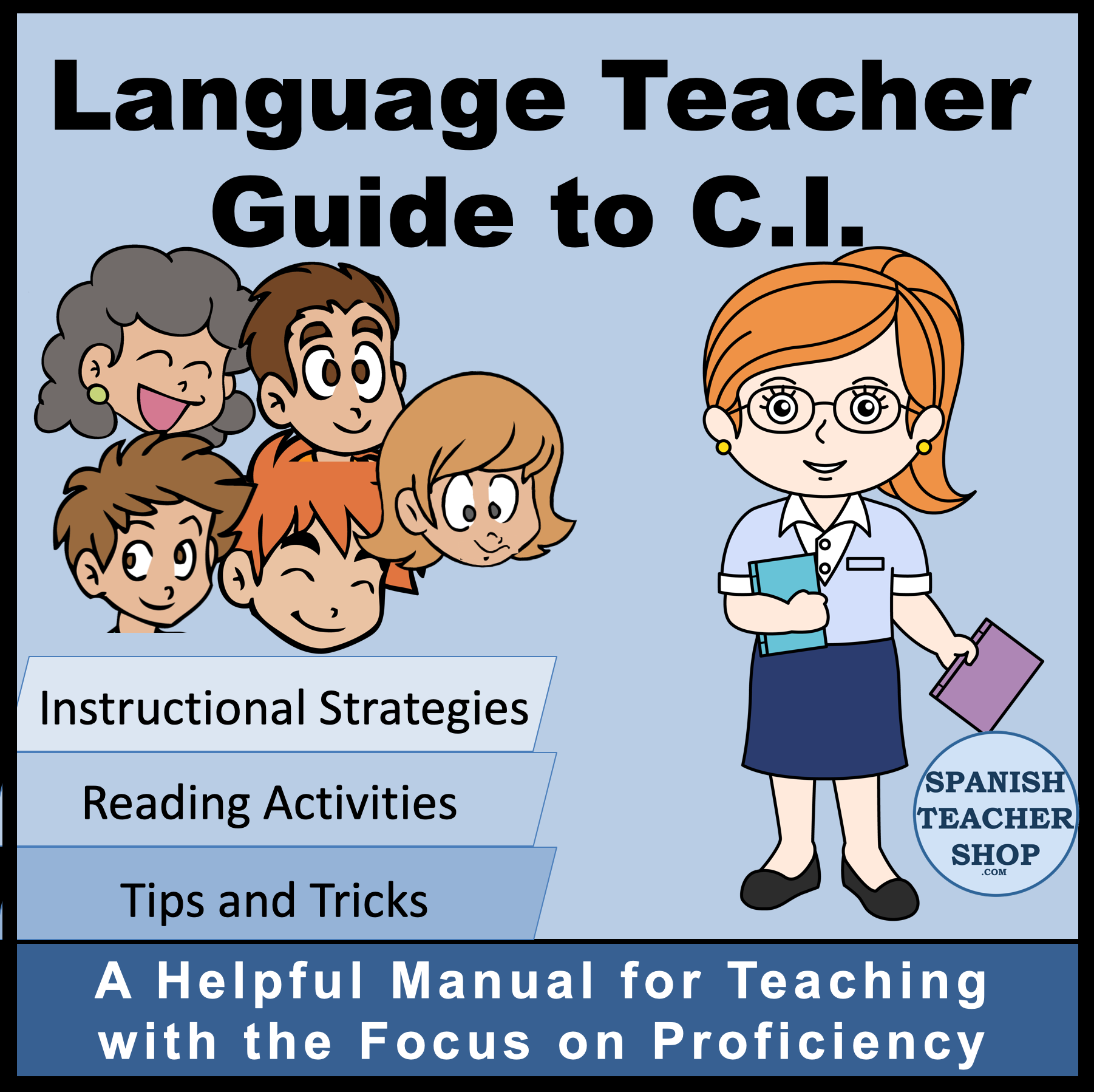This year we are adopting a proficiency-based classroom based on the goal of communication. All of our formal assessments will be done using proficiency-based rubrics and standards. This change in format would not have been possible without my colleagues from #langchat, who have given me many ideas and shared resources. I would specifically like to thank Amy Lenord(@alenord), Thomas Sauer, (@tmsaue1), Kara Parker from The Creative Language Class blog and the Jefferson County Public School’s foreign language department.
To start with, we adapted the following rubric from Amy Lenord to make a simple grading scale of out 5 points. Students can earn a 5, 4.5, 4, 3.5,3, or 2.5 out of 5 points to cover A+, A-, B-, C-, D-, and F, essentially what you would have as a GPA. This rubric is not intended for formal assessments, but rather to have posted to encourage the students to work towards speaking at a more proficient level.
We hope this encourages students to expand their answer and be cognoscente of how they are responding to questions and to try to work to at least a 4. To make it easy for students to understand, we have enlarged this rubric and used sentence strips to give an examples, and posted it above our whiteboard:
The question is: ¿Tienes un hermano?
with example responses corresponding to each level:
2.5= What?
3= Sí.
3.5=Sí, un hermano.
4= Sí…. tengo un…. hermano.
4.5= Sí, tengo un hermano.
5= Sí, tengo un hermano mayor; se llama Ben.
 We intend to give all students a copy of this rubric to tape to the front of their rubric. You can even print them out on index cards: Just insert the index cards into your printer and you can use this document to print as many copies as you need. Or print a set of 4 on a page (cardstock paper works best, but regular paper would be fine too) and cut them out to have students tape to notebooks. This visual reminder hopefully reminds students to work toward a goal of showcasing a higher proficiency level. A lot of students are capable of giving a “5” answer, but may try to take the easy way out by giving a 4. This visual and class discussion at the beginning of the year may be just enough to motivate them.
We intend to give all students a copy of this rubric to tape to the front of their rubric. You can even print them out on index cards: Just insert the index cards into your printer and you can use this document to print as many copies as you need. Or print a set of 4 on a page (cardstock paper works best, but regular paper would be fine too) and cut them out to have students tape to notebooks. This visual reminder hopefully reminds students to work toward a goal of showcasing a higher proficiency level. A lot of students are capable of giving a “5” answer, but may try to take the easy way out by giving a 4. This visual and class discussion at the beginning of the year may be just enough to motivate them.
Later this week, we will discuss our adapted Speaking and Writing rubrics for formal assessments.













Do you use these in beginning as well as advanced classes or are these only for beginners?
I only teach beginning level, but I definitely think it can be used in all levels. Afterall, it is based on proficiency, and you will still have different levels of in upper levels.
Kinda sorta did this anyway, but this is much clearer and easier to follow. Thank you for posting!
I love the simplicity and student-friendly language. Two questions, somewhat related.
1) For 2.5: Why give any credit for no language skill demonstrated: no comprehension or production?
2) What was the rational for 1-5 and not 1-4 (as GPA) – easier for kids to understand and will correspond to Beginner, Developing, Proficient, Advanced on skill development scale?
I think giving kids concrete examples is a great idea!
Thanks for commenting.
1)The lowest possible score is generally a 2.5 because that correlates with a 50% which would have less impact on their grade than a 0%. With such few scores being entered into the gradebook, their grade will be average better with an “F” than with a “0”.
2) I decided to use 5 so that I could differentiate between “A” quality work and “A+” quality work. The idea here is for students to stretch themselves and not just give an adequate answer, but to try and give an outstanding answer, and push the expectations.
I teach Spanish K-5 as an enhancement and only see the students once per week. It’s the 1st year of the program but as we evolve I want to use a communication Rubric to hold the older students accountable for their learning. Do you think it’s worth having something when I only see them once a week?
It definitely makes them more aware of how they answer their questions and may push some students to use more language in their response.
What proficiency levels correspond to the point values? I’m still working on distinguishing between levels. Is 3 novice novice low, 4 novice high, and 5 intermediate low? What level is the goal for each class?
You can set it to whatever you want. Mine are Novice Low= 3, 3.5, 4. Novice-Mid = 4.5 and Novice high=5 with the expectation set at novice mid.
How can I print out big enough to display in class? Thanks!
Our school has a poster printer which is amazing.